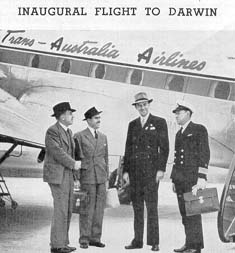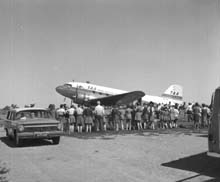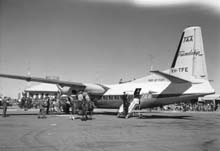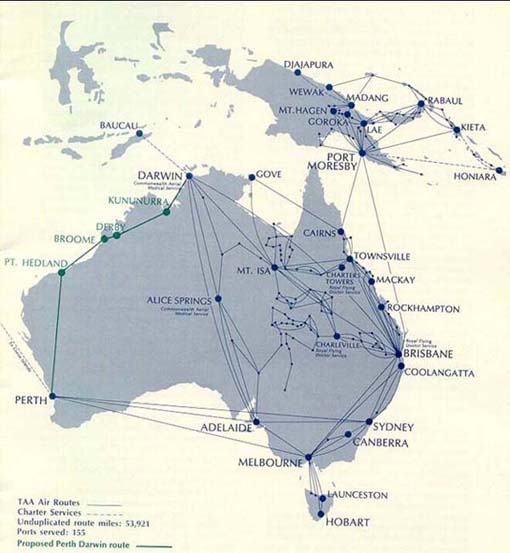The TAA Network Expansion
The biggest route development happened in 1949, when TAA took over the major routes operated by Guinea Airways from Adelaide to Darwin. At the same time QANTAS turned over their entire Queensland operation, to be included in the TAA domestic network, while it (QANTAS) pursued its international ambitions.
TAA Growing Outback Routes - 1949
TAA's routes from Adelaide to Darwin went, via Mt Elba, Oodnadatta, Coober Pedy, Alice Springs, Katherine, then to Darwin, and were serviced by using the TAA DC3 aircraft removed from other major trunk routes.

It was only then that the airline started to become National, as it was then linking North with South and East with West, and now it was expanding again, but this time through the centre of Australia, and the real outback country.
Many of these routes to the outback only operated weekly, or sometimes twice weekly.
The DC3 was most suitable for this as it could land on unmade level surfaces, grass, gravel or just plain dirt, and with a regular schedule, the TAA brand became a familiar visitor.

These were not daily services and so handling agents were contracted to provide ground handling and catering, who would be contacted regarding passengers traveling, aircraft departure times, and any additional items that may be required or requested to be supplied to the aircraft. Communication was by radio or if installed, telephone or teletype, using ground lines where they existed, or pedal radio where they did not.
Network Expansion Fleet Expansion
From 1949 through to 1954, network growth continued and TAA introduced services to other outlying country towns and large homesteads, mainly in Queensland and New South Wales. Normally a weekly or fortnightly service visited these areas, often referred to as ' a milk run' due to the number of stops made within a day.
John Watkins was continually researching aircraft for replacement, and in the late 1950's TAA introduced the FOKKER F27 'Friendship" as the DC3 replacement aircraft.


TAA Route Map 1973